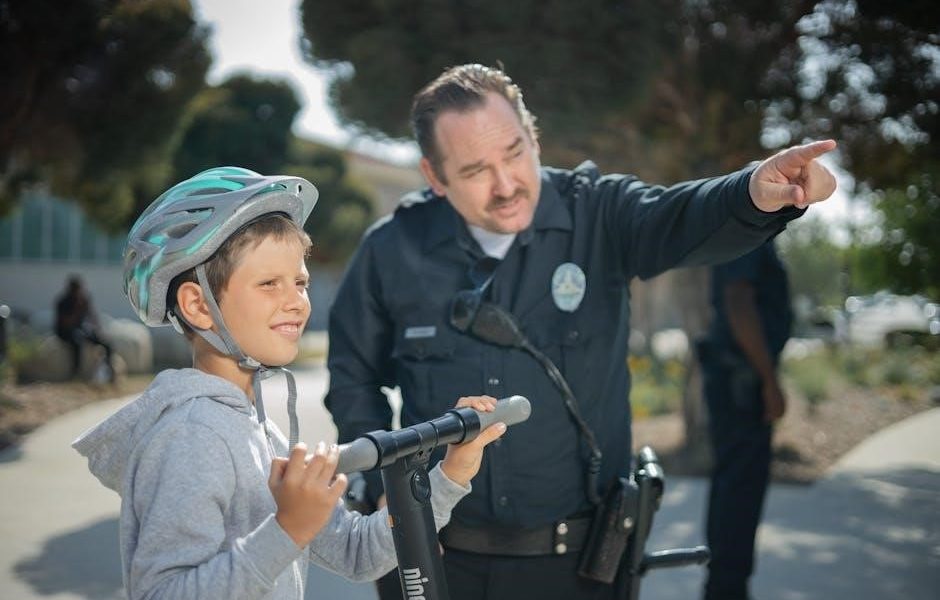Cop cams, or body-worn cameras, are devices used by law enforcement to record interactions with the public, ensuring accountability and transparency in police operations.
1.1 What Are Cop Cams?
Cop cams, or body-worn cameras, are small, portable devices worn by law enforcement officers to record video and audio during interactions with the public. These devices are typically attached to an officer’s chest, shoulder, or head and are designed to capture evidence in real-time. They are often equipped with features like wide-angle lenses, night vision, and audio recording capabilities. Cop cams are designed to be durable and user-friendly, with options for real-time streaming and storage on cloud-based platforms. They play a crucial role in documenting police-citizen encounters, providing a visual and auditory record of events. By capturing high-quality footage, cop cams help ensure accurate documentation of incidents, which can be invaluable for investigations and courtroom proceedings.
1.2 Purpose of Cop Cams
The primary purpose of cop cams is to enhance transparency, accountability, and trust in law enforcement. By recording interactions, these devices provide an objective record of events, helping to ensure adherence to protocols and procedures. They serve as a tool for evidence collection, aiding in investigations and courtroom proceedings. Additionally, cop cams promote public trust by offering insight into police actions, fostering a more open and accountable relationship between law enforcement and the communities they serve. They also support officer training by allowing for the review of incidents and the identification of areas for improvement. Overall, cop cams are a vital component in modern policing, contributing to safer and more equitable interactions. Their use has become a cornerstone of ethical and effective law enforcement practices worldwide.
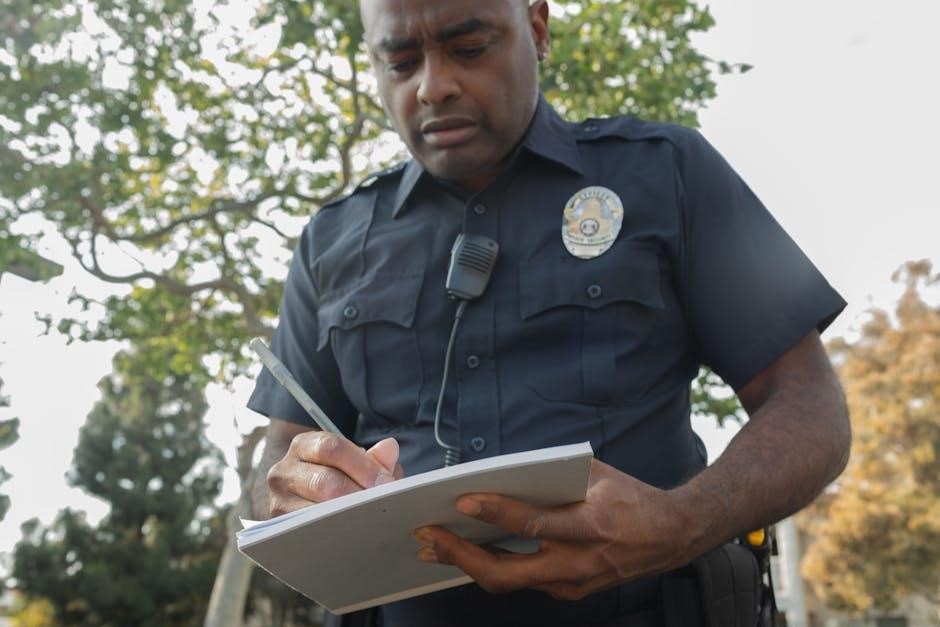
Benefits of Using Cop Cams
Cop cams enhance transparency, accountability, and evidence quality, fostering trust and improving law enforcement practices. They reduce false complaints and provide a clear record of events.
2.1 Increased Transparency in Law Enforcement
Cop cams significantly enhance transparency in law enforcement by providing an unbiased visual record of police interactions with the public. This visibility fosters trust and accountability, ensuring that both officers and citizens are held to high standards of conduct. The footage captured by these devices allows for independent review of incidents, reducing potential biases and misunderstandings. As a result, communities gain confidence in the fairness of law enforcement operations, leading to improved relationships between police and the public. The transparency provided by cop cams is a cornerstone of modern, accountable policing.
2.2 Improved Evidence Collection
Cop cams revolutionize evidence collection by capturing high-quality, real-time video and audio during police interactions. This footage provides a comprehensive record of incidents, reducing reliance on witness testimony alone. The objective nature of body cam recordings ensures accuracy, helping to clarify disputes and support legal proceedings. In cases where evidence is contested, the video serves as a reliable resource for investigators and courts. Additionally, the ability to review footage enhances the precision of incident reports, ensuring that details are accurately documented. This capability not only strengthens the integrity of evidence but also aids in building robust cases, ultimately contributing to fairer outcomes in legal proceedings and public trust in law enforcement practices.
2.3 Enhanced Officer Accountability
Cop cams significantly enhance officer accountability by providing an unbiased record of police interactions. The footage allows for thorough review of officer conduct, ensuring adherence to protocols and ethical standards. This transparency fosters trust between law enforcement and the public, as actions are subject to scrutiny. In cases where misconduct is alleged, body cam footage serves as a critical tool for investigation. Officers are also more likely to maintain professionalism, knowing their actions are documented. This accountability not only upholds the integrity of law enforcement but also protects officers from unfounded accusations, promoting fairness and justice in policing practices.
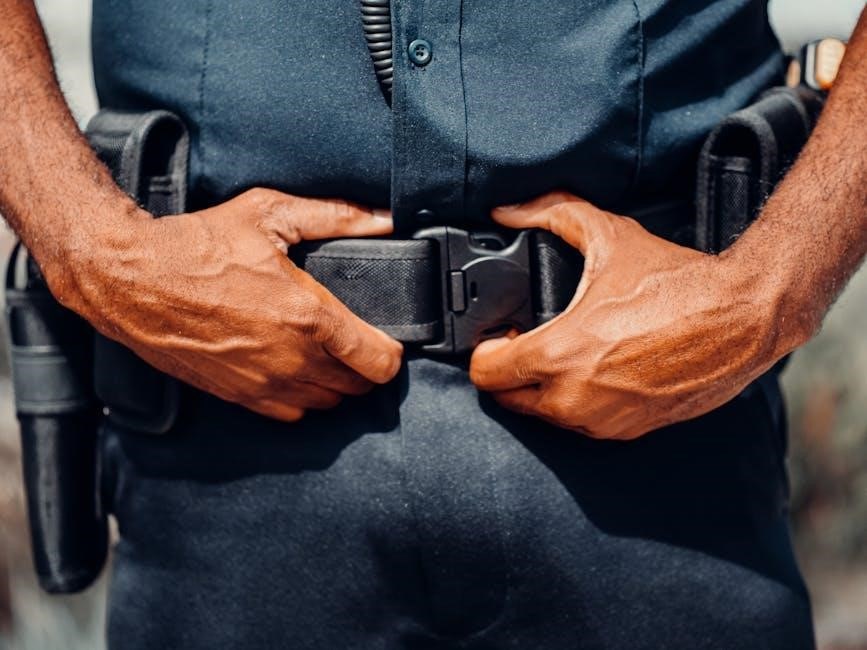
2.4 Reduced False Complaints Against Officers
Cop cams play a crucial role in reducing false complaints against officers by providing objective evidence of interactions. Body cam footage offers a clear record of events, allowing for accurate assessment of officer conduct. This transparency discourages individuals from filing unfounded complaints, as the evidence often contradicts false allegations. In cases where complaints are made, the footage serves as a reliable tool to verify the facts, protecting officers from baseless accusations. The presence of video evidence also encourages officers to adhere to protocols, fostering professionalism. By minimizing false complaints, cop cams help maintain public trust and reduce the administrative burden on law enforcement agencies, ensuring resources are focused on legitimate concerns rather than unfounded claims.
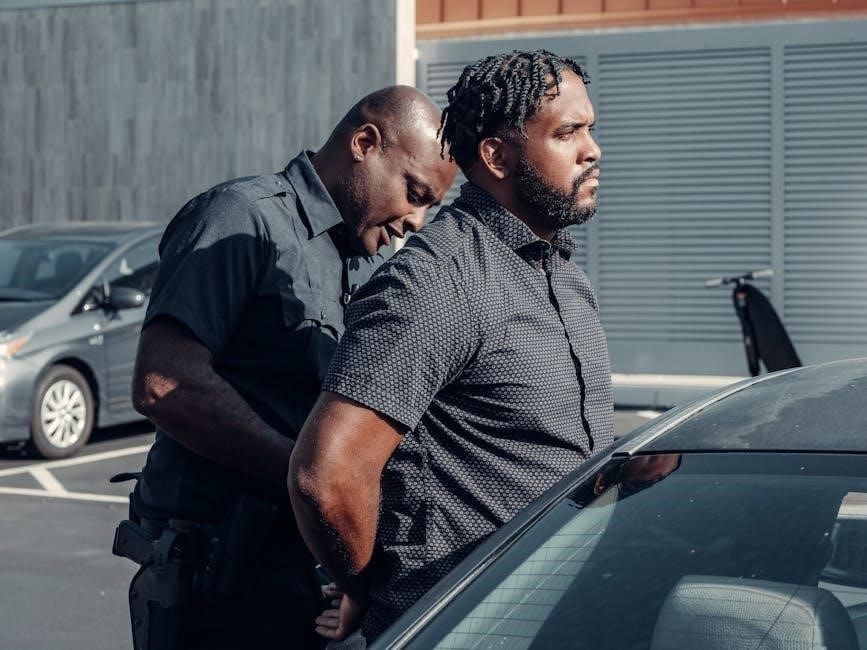
Legal Considerations
Cop cams raise important legal questions regarding privacy, data storage, and footage admissibility in court, requiring departments to comply with varying jurisdictional laws and regulations.
3.1 Privacy Laws and Cop Cams
Balancing public safety with individual privacy is crucial when implementing cop cams. Privacy laws vary by jurisdiction, often requiring officers to inform individuals when recording. Some states prohibit filming in private residences without consent. Additionally, the storage and sharing of footage must comply with data protection regulations to prevent unauthorized access. Departments must establish clear policies on when and where recordings can occur to respect privacy rights while maintaining public trust and accountability.
3.2 Freedom of Information Act (FOIA) Requests
Body cam footage is often subject to Freedom of Information Act (FOIA) requests, allowing the public to access recordings for transparency and accountability. However, certain exemptions may apply, such as withholding footage to protect ongoing investigations or sensitive personal information. Law enforcement agencies must balance public disclosure with privacy concerns, often redacting portions of videos to comply with legal standards. The process of fulfilling FOIA requests can be time-consuming, requiring careful review and legal oversight. Despite these challenges, FOIA ensures that the public can access critical information, fostering trust in law enforcement practices and accountability in police-citizen interactions.
3.3 Admissibility of Body Cam Footage in Court
Body cam footage is increasingly used as evidence in court, with its admissibility depending on factors like relevance, authenticity, and compliance with legal standards. Judges typically assess whether the footage is reliable and material to the case. Challenges may arise regarding the chain of custody, ensuring the video hasn’t been altered. Additionally, issues like audio quality and the officer’s perspective can impact its weight as evidence. Despite these considerations, body cam recordings often provide critical insights, helping to clarify disputes and support testimonies. Proper handling and storage of the footage are essential to maintain its admissibility, ensuring it can be effectively utilized in legal proceedings.
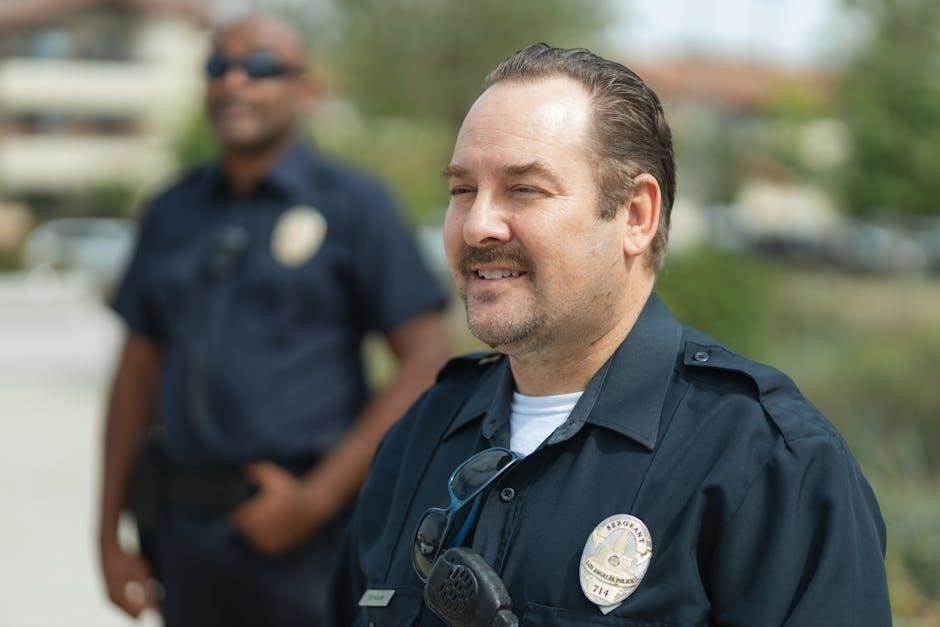
Maintenance and Storage
Regular updates, secure storage, and proper handling are essential for maintaining cop cam functionality. Departments must adhere to strict protocols to ensure footage integrity and legal reliability.

4.1 Proper Care and Handling of Cop Cams
Proper care and handling of cop cams are crucial for ensuring optimal performance and longevity. Officers should follow manufacturer guidelines for cleaning and maintenance. Avoid exposing the devices to extreme temperatures or physical stress. Regularly inspect for damage or malfunctions, addressing issues promptly. Use approved accessories and avoid tampering with internal components. Store the device in a secure, dry location when not in use. Ensure the battery is charged according to specifications to prevent degradation. Adhere to departmental protocols for uploading and storing footage. Proper handling ensures reliable evidence collection and maintains public trust in law enforcement transparency and accountability. Regular maintenance is essential for sustaining device functionality and data integrity.
4.2 Data Storage Solutions for Body Cam Footage
Effective data storage solutions are vital for managing body cam footage, ensuring secure and organized access. Departments often use cloud-based systems, offering scalability and remote accessibility. On-premise servers provide an alternative for enhanced physical security. Encryption and secure authentication protocols protect footage from unauthorized access. Automated backup systems prevent data loss in case of technical failures. Metadata tagging aids in efficient retrieval of specific recordings. Compliance with retention policies is essential, balancing storage costs with legal requirements. Regular audits ensure integrity and adherence to regulations. Proper storage solutions maintain the integrity of evidence, supporting transparency and accountability in law enforcement operations while safeguarding sensitive information.
4.3 Security Measures to Prevent Tampering
Robust security measures are essential to prevent tampering with body cam footage, ensuring its integrity for legal and transparency purposes. Encryption is a key safeguard, protecting data from unauthorized access. Secure authentication protocols, such as multi-factor authentication, further enhance access controls. Chain of custody tracking ensures all interactions with the footage are documented. Digital watermarks can be embedded to detect unauthorized alterations. Role-based access controls limit who can view or modify recordings. Regular audits and logs monitor access and changes, while redundant storage systems prevent data loss. Anti-tamper software alerts administrators to any suspicious modifications. By implementing these measures, departments maintain the credibility and reliability of body cam evidence, upholding public trust and legal standards.
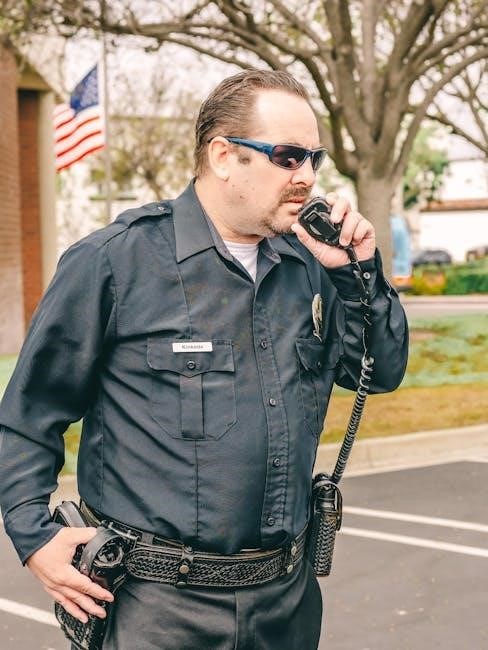
Training and Best Practices
Comprehensive training programs ensure officers understand proper cop cam usage, emphasizing ethical recording practices and adherence to departmental policies to maintain public trust and accountability.
5.1 Officer Training Programs for Body Cam Use
Effective officer training programs for body cam use are essential to ensure proper deployment and utilization. These programs typically include both classroom instruction and hands-on practice, covering technical aspects such as camera operation, data management, and storage protocols. Additionally, training emphasizes ethical considerations, such as when and how to activate the camera, privacy rights, and minimizing bias in recording practices. Officers are also educated on legal requirements and departmental policies to maintain compliance. Regular refresher courses and scenario-based exercises help reinforce best practices, ensuring officers are well-prepared to use cop cams responsibly and effectively in various situations.
5.2 Best Practices for Activating and Using Cop Cams
Best practices for activating and using cop cams involve clear guidelines to ensure ethical, legal, and effective recording. Officers should activate cameras during all public interactions, including traffic stops, arrests, and use of force incidents. Cameras should be positioned to capture a clear view of events, and officers must ensure they are fully operational before engaging in duties. Additionally, officers should inform individuals when they are being recorded, unless doing so would compromise safety or the situation. Footage should not be edited or deleted, and officers must follow departmental protocols for uploading and storing recordings. Adhering to these practices helps maintain integrity, transparency, and accountability in law enforcement operations.
5.3 Post-Incident Procedures for Footage Review
Post-incident procedures for footage review are critical to ensure accountability and accuracy. After an incident, officers must immediately secure and label the footage to maintain its integrity. Supervisors should conduct a preliminary review to identify key moments and ensure compliance with policies. A detailed analysis should follow, documenting findings and any relevant context. Footage should be stored securely to prevent unauthorized access or tampering. If the incident involves use of force or misconduct allegations, an independent review panel may be involved. Final reports should summarize the review process and any recommended actions. These steps ensure transparency, fairness, and adherence to legal and ethical standards in handling body cam evidence.
